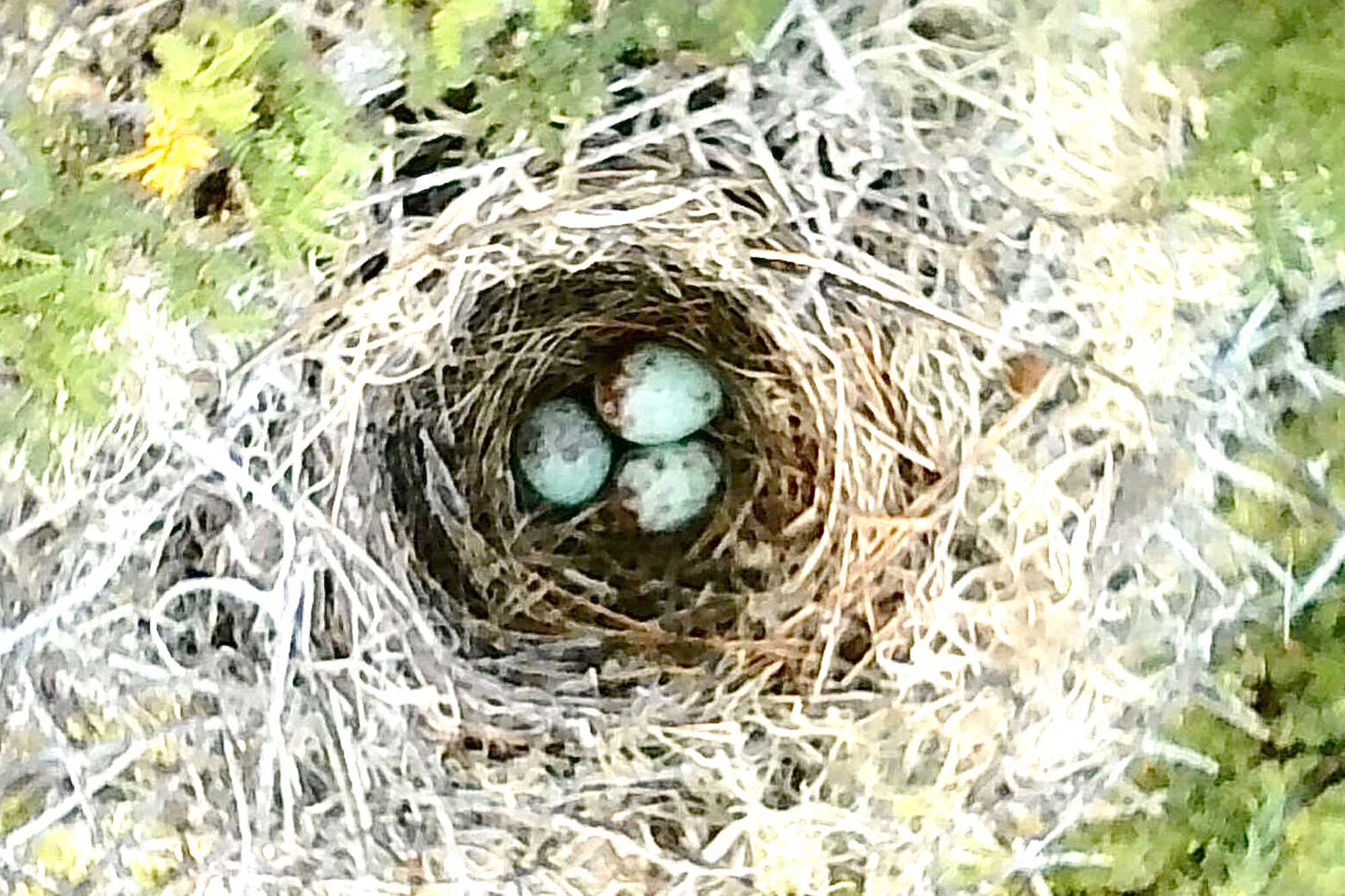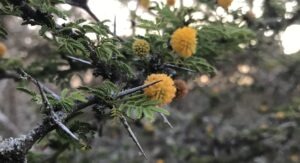
To whom It may concern,
Philornis downsi may as well be from Mars.
February 28, 2022, Week 07 – Isla De Santa Cruz, Ecuador

During the past few weeks, we’ve been looking for new mockingbird nests in which we can study Philornis. Now that we’ve found and mapped nests from different sites, we’re beginning to look inside the nests with a camera, taking notes on the contents of each. (See top photo).

We use a plumber’s camera that looks like a long wire cord with a small glass eye at the end. The cable, which can be bent in the direction that we need to see into a nest, is fed through a pole so that we can hold it above nests without the camera falling.
Holding the pole next to the nest, someone can watch the nest on a screen attached to the bottom of the cord. Though a bit funny looking, this works very well for taking pictures and checking for nestlings, or eggs (though the resolution, as you can see in the top image, can be less than ideal).
Some nests have tiny nestlings, or spotted eggs inside, though many don’t have either yet. On occasion, a pair of mockingbirds will abandon their nest. The reason for this depends on the nest. Some nests are abandoned because the nestlings have been killed by Philornis.
When there are fewer nests in an area, each nest is likely to have more flies putting the nestlings at risk. Sometimes the flies will kill the nestlings within a few days of hatching.
It’s important to remember that to the birds, Philornis might as well be from Mars. The flies aren’t native to the Galapagos but were accidentally introduced to the Islands in the late 1990s.
This means that the birds haven’t had time to evolve defenses against the blood sucking flies. Other nests are abandoned because often, a pair of mockingbirds build more than one, and choose their favorite to lay eggs in. When we find that a nest has been abandoned, or one where the nestlings have survived, and “fledged” leaving the nest, Matthew and Aoife dissect it, looking for full grown flies, or young flies that can be found as worm-like larvae, or inside pupae.

Today I went to El Garrapatero, known for its beautiful white sand beaches, with Austin, Mom, Matthew, and Aoife. We checked four nests that we knew about, and looked for a few more. Some had nestlings, some had eggs, and we found a new nest that is empty.

We stopped at the little pond to watch the six flamingos that were walking around, and honking at each other today. Aside from the area near the pond and the beach, everything is so dry, most of the plants look dead and grey. Some of the places where we walked were thicker and hard to move around, especially with equipment. We carry the camera, ladder (who is named Larry), and a few poles for checking nests, and getting nests down. We found an easier way to get to one nest, and walked around a couple little paths looking for new nests. When we were done looking, we went to the beach to swim and cool off before Goberth picked us up and we drove home.
On the way home, it rained a little bit, though unfortunately nowhere near our field sites, but the rain was nice all the same, and we saw lots of tortoises. When we got home, I worked on homework and took a nap.
To end this week’s letter, here’s a question:
From Jordan
Q: My question for you is, what Galapagos animal (or animals) do you find the most interesting and why?

A: Hahaha, hi Jordan! That’s a very good question, and one which takes quite a lot of thinking to answer. There are so many cool organisms here. I think that my favorite so far are the centipedes. They’re huge! It’s surprising to see them on a pathway before the sun comes up, though Matthew and Aoife found one on a tree cactus in the middle of the day today. Really wouldn’t want to be stung while checking nests … Thanks for the question!
That’s all for this week, write soon!
-Nora

If you are interested in following our expedition, check for new letters each week on the University Webpage, where you can find blog posts, and ask questions.
